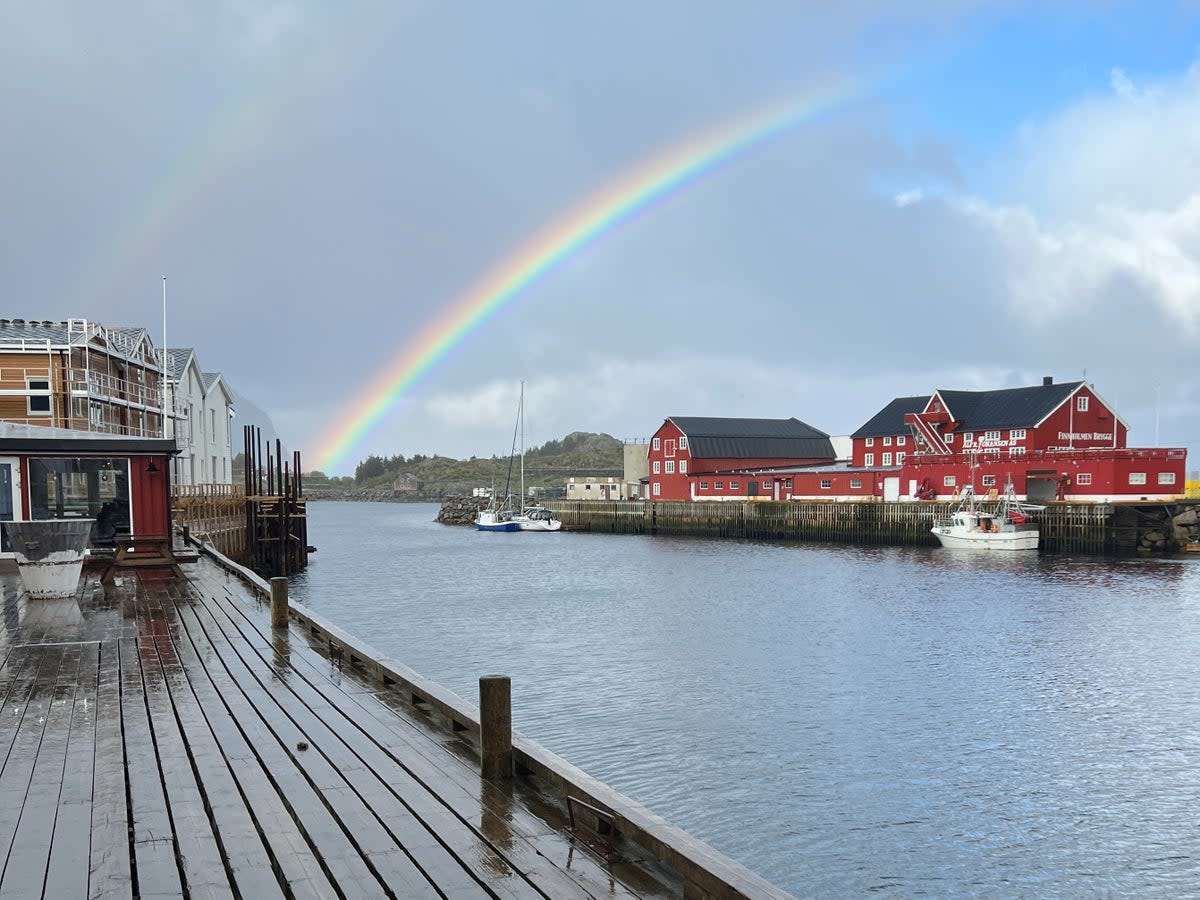On the long and winding Arctic road, Sweden needs to step up its rail game

Simon Calder, also known as The Man Who Pays His Way, has been writing about travel for The Independent since 1994. In his weekly opinion column, he explores a key travel issue – and what it means for you.
The story so far. Last Saturday morning found my wife, Charlotte, and I as the only passengers aboard the Iron Ore railway into Arctic Sweden from Boden to Kiruna.
After a blissful train journey, the mining town of Kiruna proved a jolt. The centre is being moved building-by-building 3km away, to a place where underground workings will not jeopardise the residents. It felt like a ghost town where even the spirits had checked out. Furthermore the 2.52pm to Narvik had been cancelled, with no further trains to the Norwegian port that day. Only one option remained: hitchhiking. The E10 highway awaited.
Yves was driving a battered old Audi, but at least he was going to Norway. And he turned out to be a fascinating character: a geologist from Lyon who had moved to the Arctic to help the state-run mining enterprise find some more iron. He turned off just north of Narvik, saying he would love to have taken us into the city but the bridge toll (about £15 return) was a deterrent.
Along came Sven in a rather smarter car: an electric Ford Mustang. The car purred into Narvik, which merited a few hours exploration before the late-afternoon bus 300 across the Lofoten Islands – all handily joined by some superb and ferociously expensive civil engineering.
Handing over the equivalent of £30 to a bus driver might seem a bit steep but (a) this is Norway and (b) the enthralling journey to a place called Rorvik took almost five hours. And apart from an undersea tunnel that seemed to go on for miles, the views were spectacular: the ragged edge where Europe collides with the Atlantic, well above the Arctic Circle.
One disappointment: the promised bus connection to the fishing village of Henningsvær failed to materialise. But Borge did, in a smart blue Volvo, in which he welcomed us – and revealed that he had left Oslo to take up the role running the Joker grocery store in the village.
I wondered: “What do you miss about Oslo?”
Only the airport, he replied, and its easy access to southern climes.
I think it would take a long time for the joy of Henningsvær to wear off: an absurdly picturesque haven, the world’s most scenic football pitch and an oceanside sauna offering Atlantic immersion to cool off. And, for British visitors, an excellent grocery store for sourcing picnics. And, on Sunday evening, a double rainbow.
Day three of our Arctic adventure dawned with no clear idea of how to reach the single-letter destination: Å, where the Lofoten Islands reach a forlorn conclusion. Two generous Norwegians provided lifts halfway – whereupon a bitter Arctic gale took hold and generosity took a back seat. Unlike us.
After a frozen hour, a French hiker driving to a rock face offered 10 minutes and five miles of respite. Miraculously, les Français stepped in once more, in the shape of Olivier and Marie-Paule. We travelled together to the bitter end, went “aah” at pretty port of Å – and then they drove us to the port for a ferry to Bodo on the mainland.
The vessel had the look of a giant lifeboat, which given the weather is a smart idea. It departed and arrived in perfect time. You will hear more about Bodo soon, as it is a European Capital of Culture for 2024. Call me a philistine, but from my perspective its leading attribute is that you can walk from the city centre to the airport in around 15 minutes.
Back in the deep Scandinavian south, Swedish Railways had one more trick up its organisational sleeve: one final rail replacement bus to Stockholm. Having aimed to catch four Swedish trains during the adventure, the total was 1.5 (the half being the abbreviated portion covered on the Iron Ore railway).
Rail replacement buses: 2
Rail replacement taxi: 1
Rail replacement hitchhiking: 2
And the organisation still owes me for a seat reservation on a ghost train. When hitchhiking proves more reliable than trains, Sweden needs to step up its rail game.